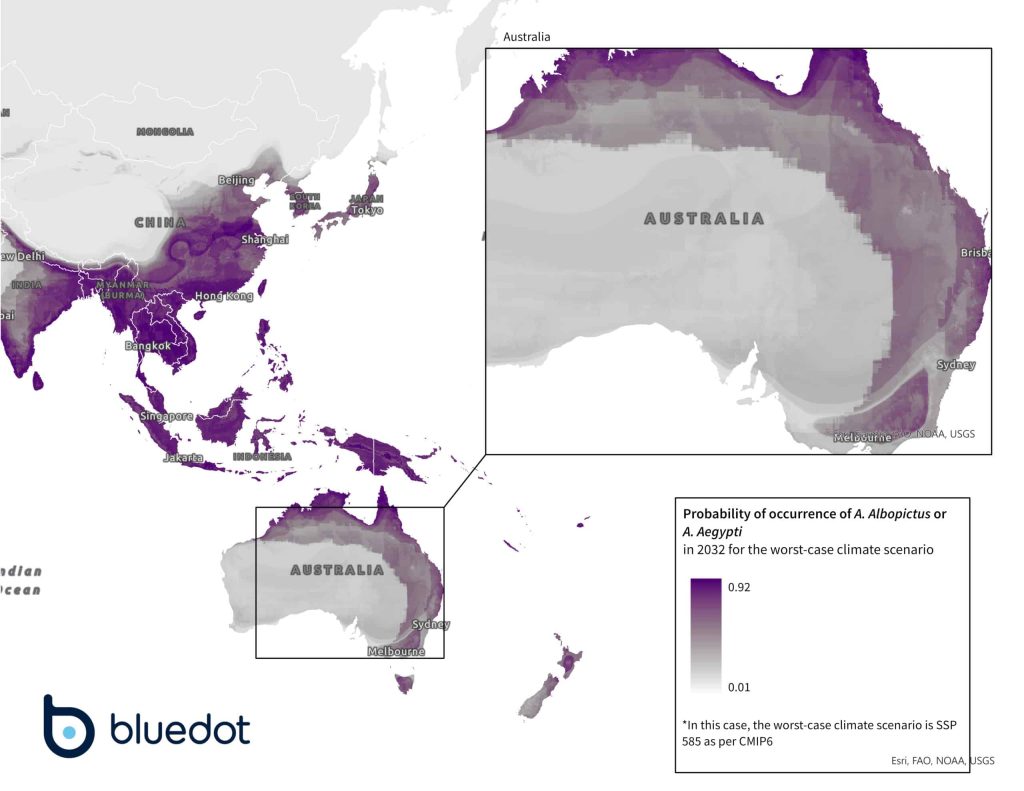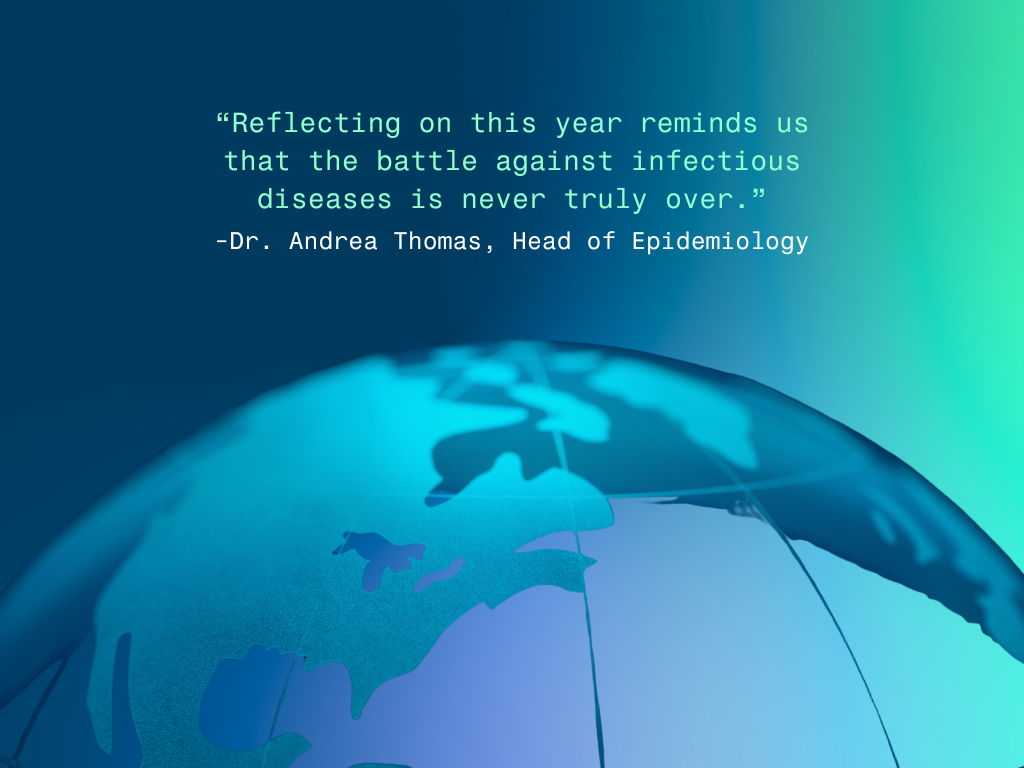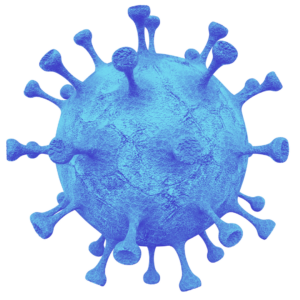Anticipating burden of disease for mosquito-borne diseases
Organizations can now anticipate the future burden of chikungunya, dengue, yellow fever, and Zika with BlueDot’s latest intelligence on global environmental suitability for Aedes mosquitoes. With 5 km by 5 km granularity, BlueDot predicts how shifting global surface temperatures will impact the probability of Aedes mosquitoes inhabiting locations over 10 years – a unique and significant breakthrough in the effort against the spread and disruption of mosquito-borne diseases.
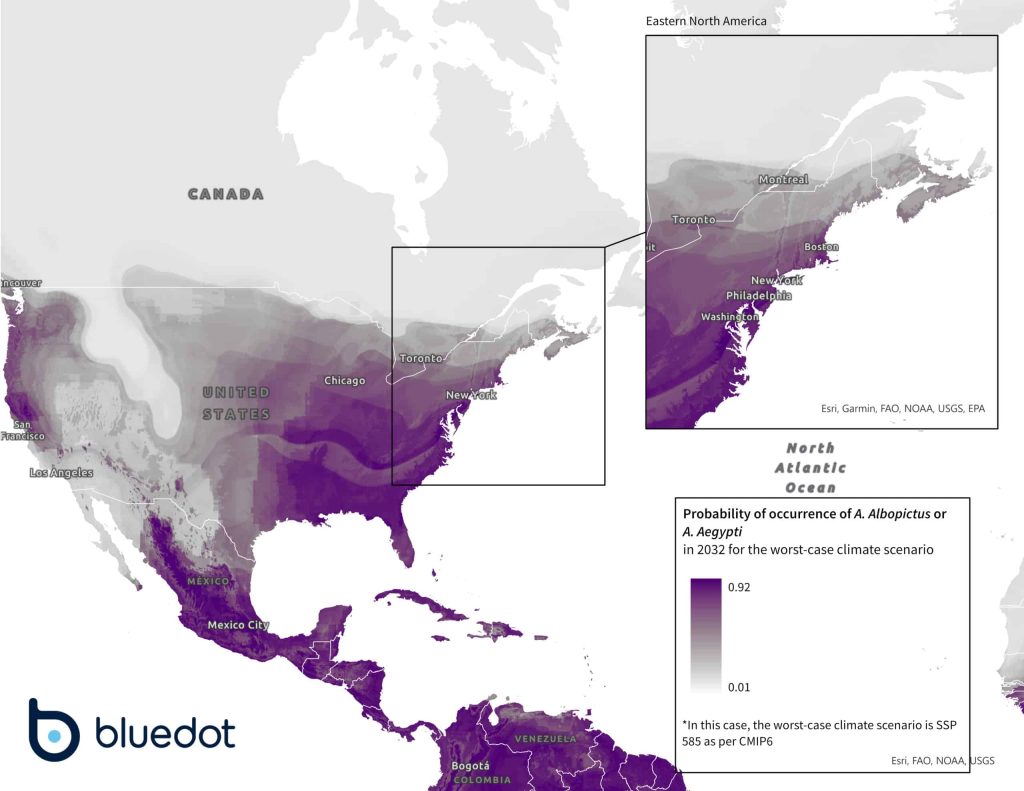
Northern expansion into areas such as New York, London, and Toronto
Over 10 years the current range of habitable environments to Aedes albopictus mosquitoes is projected to expand north including 400 km from New York State to Canada, 400 km into Northern Europe, 300 km into UK and Scotland, and 250 km from the Amazon Basin to northern Venezuela. Select examples of regions heavily impacted by habitat expansion include Beijing, London, New York, and Toronto – which combined have an estimated population of over 40 million individuals (see chart below). As new regions become breeding grounds for Aedes mosquitoes, and the diseases they transmit, new at-risk populations may be exposed to infection – and are uniquely at risk to large outbreaks.
Probability of hosting Aedes albopictus mosquitoes*
| 2023 | 2032 | Estimated local population | |
|---|---|---|---|
| Beijing | 38% | 51% | 21.9M1 |
| London | 45% | 56% | 8.8M2 |
| New York | 70% | 78% | 8.5M3 |
| Toronto | 39% | 61% | 2.8M4 |
*based on the worst-case scenario (SSP5-8.5)
1 Statistica.com (2021) 2 London Datastore (2021)
3 United States Census Bureau (2022) 4 StatsCanada (2022)
This underlines the need for education and procurement of medical or other countermeasures such as insect repellant, appropriate clothing or netting, and vaccinations (where applicable), which are readily available and can help prevent the infection and the spread of mosquito-borne diseases.
Complete datasets and findings are available exclusively to BlueDot clients for both Aedes albopictus and Aedes aegypti mosquitoes globally at 5 km x 5 km granularity.
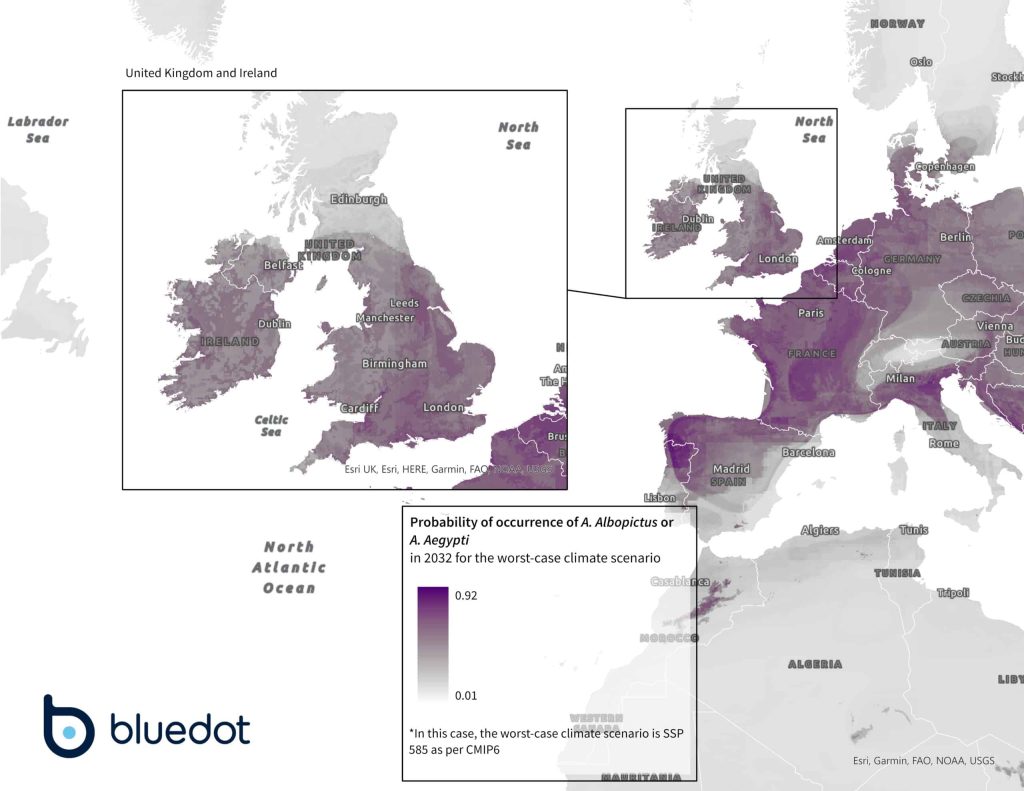
About mosquito-borne diseases
Mosquito-borne diseases (or vector-borne diseases) are carried and transmitted to humans via mosquitoes. Aedes albopictus and Aedes aegypti mosquitoes are known carriers for chikungunya, dengue, yellow fever, and Zika – four of the most disruptive mosquito-borne diseases known today.
Traditionally, Aedes albopictus and Aedes aegypti mosquitoes inhabit areas near the equator and are not able to survive in colder climates. However, the impact of climate change suggests that in the future these mosquitoes will be able to survive and spread disease in new locations.
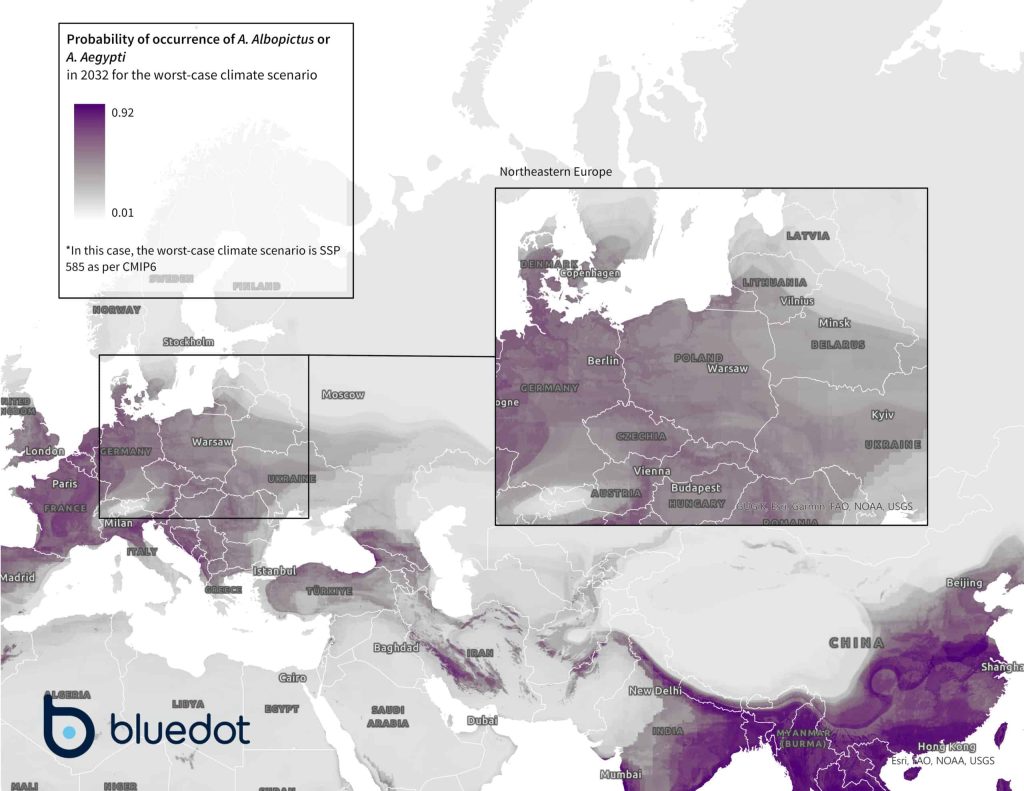
BlueDot’s methodologies
BlueDot’s predictive intelligence utilized a gradient-boosted regression tree model to forecast global climatic suitability for Aedes albopictus and Aedes aegypti mosquitoes under the projected climate of the next 10 years. Suitability was predicted at a granularity of 5km by 5km, under three different climate change pathways selected from the 6th Coupled Model Intercomparison Project. Precipitation, surface temperature and elevation were used along historical mosquito occurrence data, to fit the models. These indicators were selected due to their high impact on mosquito environmental suitability, and their high potential for change as the climate continues to evolve.
Climate change pathways are driven by different socioeconomic assumptions called shared socio-economic pathways (SSPs) and represent a “best-case scenario” (SSP 1-2.6), a “most-likely scenario” (SSP 2-4.5), and a “worst-case climate scenario” (SSP 5-8.5) for how the climate is likely to change over the next 10 years based on the current trajectory. Based on model outputs, we can predict the conditional probability that the environment will be suitable for the occurrence of Ae. albopictus or Ae. aegypti mosquito, within the given climate scenario, and given year.
